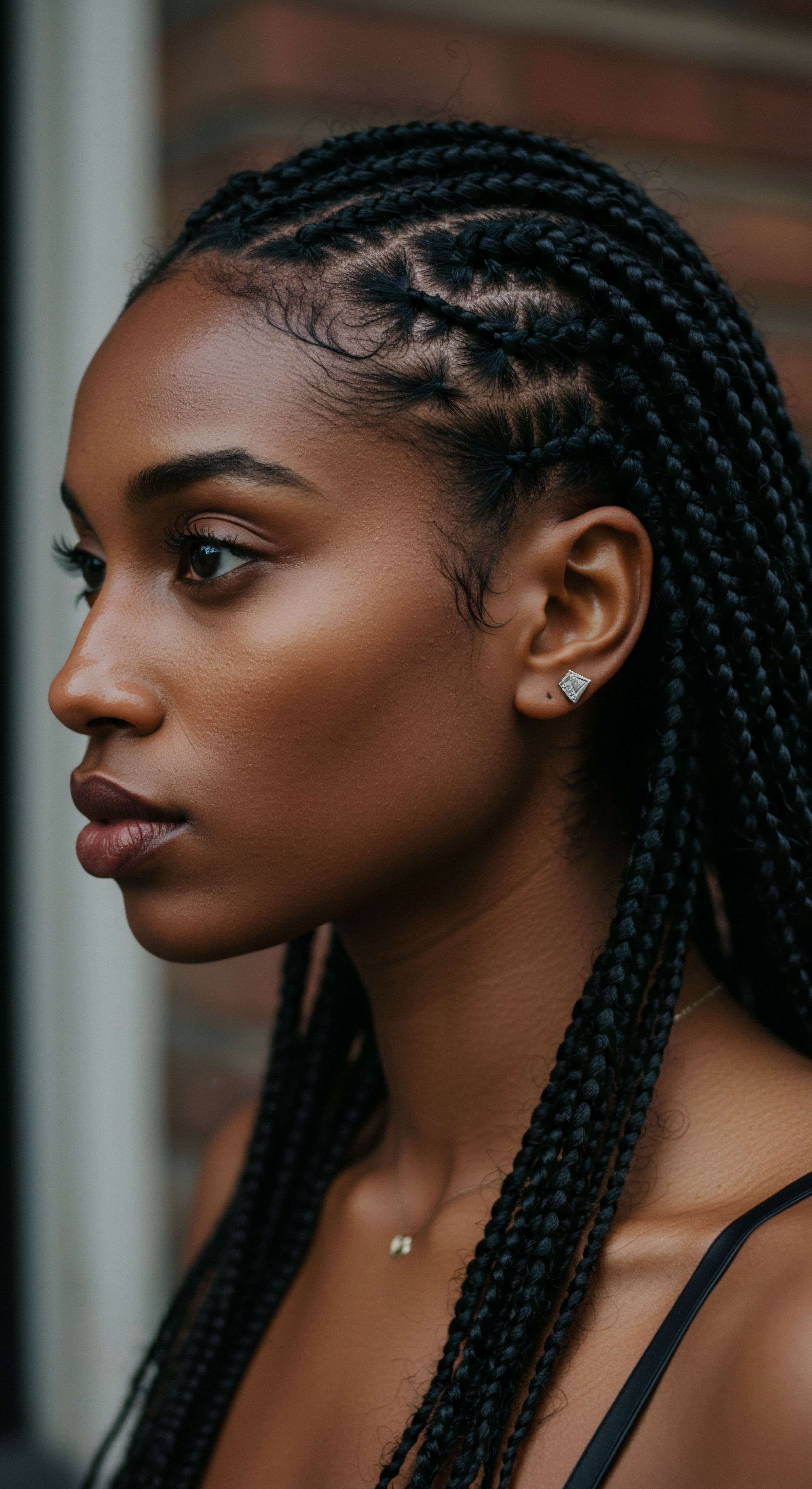
Fundamentals
Within the vibrant ecosystem of our scalp, where every strand begins its journey, resides a microscopic community of organisms. Among these, a particular genus of yeast, known as Malassezia, plays a natural, often unnoticed, role. The fundamental explanation of Malassezia Overgrowth speaks to a moment when this delicate balance shifts, and these typically benign residents proliferate beyond their usual numbers.
This increase can lead to various scalp conditions, the most commonly recognized being dandruff, which presents as flaking and sometimes itching. For those with textured hair, this elemental understanding holds particular significance, as the unique characteristics of curls, coils, and waves, along with their associated care practices, can influence the scalp’s microenvironment.
This phenomenon, at its most basic interpretation, signifies an imbalance rather than an invasion. Malassezia yeasts are lipophilic, meaning they thrive on lipids, the natural oils (sebum) produced by our sebaceous glands. When sebum production increases, or when certain conditions create a more hospitable environment for these yeasts, their population can expand. This proliferation, the overgrowth, initiates a cascade of events on the scalp.
The yeast’s metabolic processes can release irritating byproducts, leading to inflammation and an accelerated shedding of skin cells. These cells clump together, forming the visible flakes we associate with an irritated scalp. The meaning of this imbalance extends beyond mere aesthetics; it signals a disruption in the scalp’s serene equilibrium, a vital foundation for healthy hair growth.
The initial delineation of Malassezia overgrowth highlights its widespread presence, affecting a substantial portion of the global population. This commonality, however, does not diminish its impact on individual experiences, particularly within the textured hair community. The unique structural characteristics of coily and kinky hair, for instance, can sometimes make it more challenging for natural scalp oils to travel down the hair shaft, potentially concentrating sebum at the scalp.
This localized abundance of lipids can, in turn, provide an inviting setting for Malassezia to multiply. Therefore, a basic comprehension of Malassezia overgrowth provides a crucial first step in fostering a healthy scalp, a sanctuary for our diverse hair textures.
Malassezia overgrowth represents a shift in the scalp’s natural microbial balance, where this common yeast multiplies excessively, often leading to noticeable scalp irritation.
Consider the simple act of cleansing. For many with textured hair, wash days are not a daily ritual; they are carefully considered events, often spaced out to preserve moisture and maintain style. This infrequent washing, while beneficial for moisture retention, can also allow for a longer accumulation of sebum and cellular debris on the scalp.
This accumulation can inadvertently contribute to an environment where Malassezia yeasts find ample nourishment, potentially leading to their heightened presence. Thus, even at a fundamental level, the interaction between natural hair care practices and the scalp’s microbial inhabitants becomes clear.
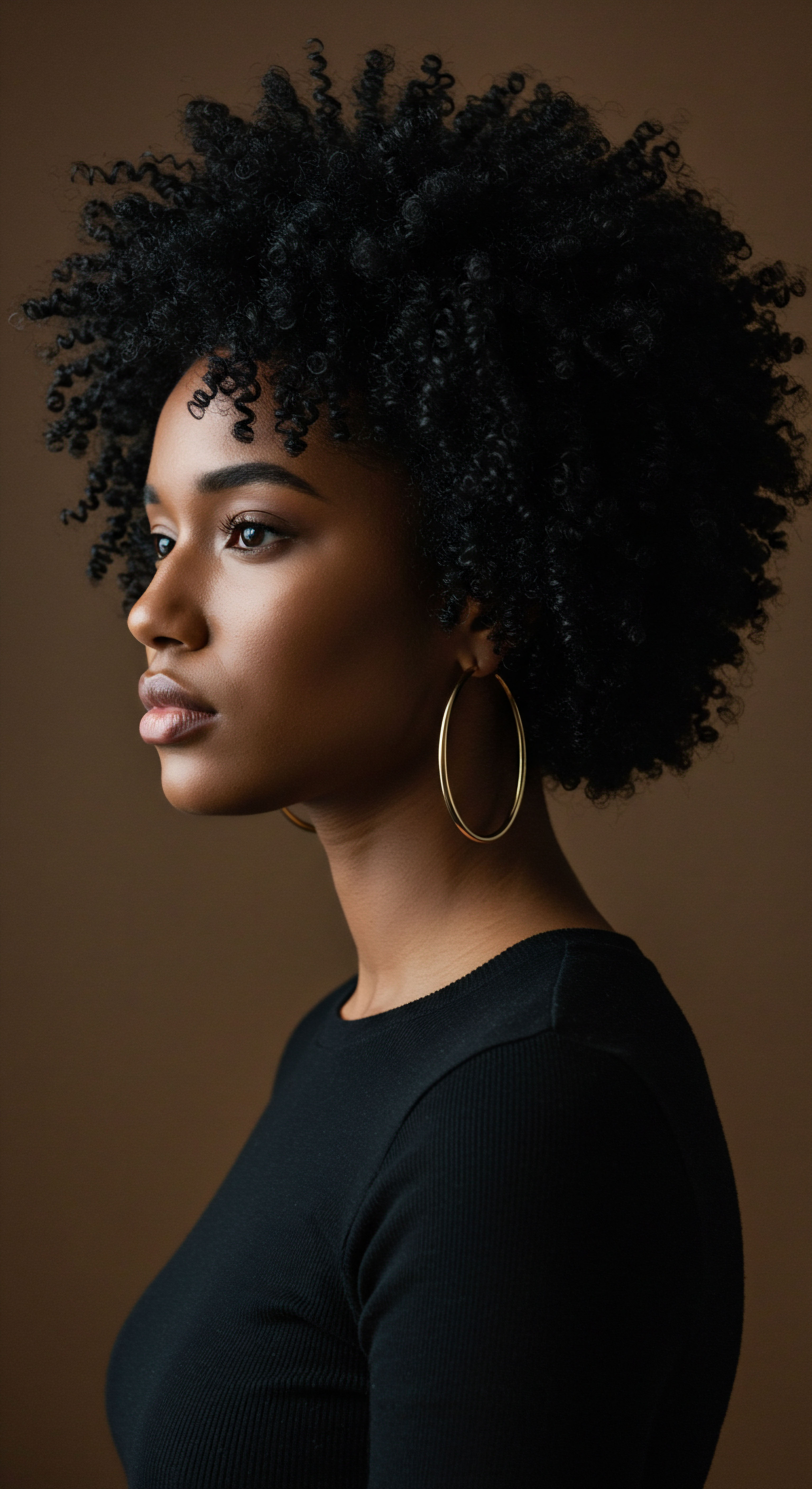
Recognizing the Signs
Identifying Malassezia overgrowth at its earliest stages is paramount for gentle, effective care. The typical manifestation involves the appearance of flakes, often white or yellowish, adhering to the hair strands or resting on the scalp. Accompanying this might be a sensation of itchiness, ranging from mild irritation to a persistent, distracting urge to scratch. For those with darker skin tones, the presentation can be subtly different, sometimes manifesting as lighter patches on the scalp rather than prominent redness, a characteristic that requires a discerning eye for proper recognition.
- Flakes ❉ Visible shedding of skin cells, varying in size and color, from white to yellowish.
- Itchiness ❉ A persistent, often uncomfortable sensation on the scalp.
- Redness ❉ Mild to moderate inflammation of the scalp skin, though less apparent on darker skin.
- Oiliness ❉ A greasy feel to the scalp, particularly in affected areas.
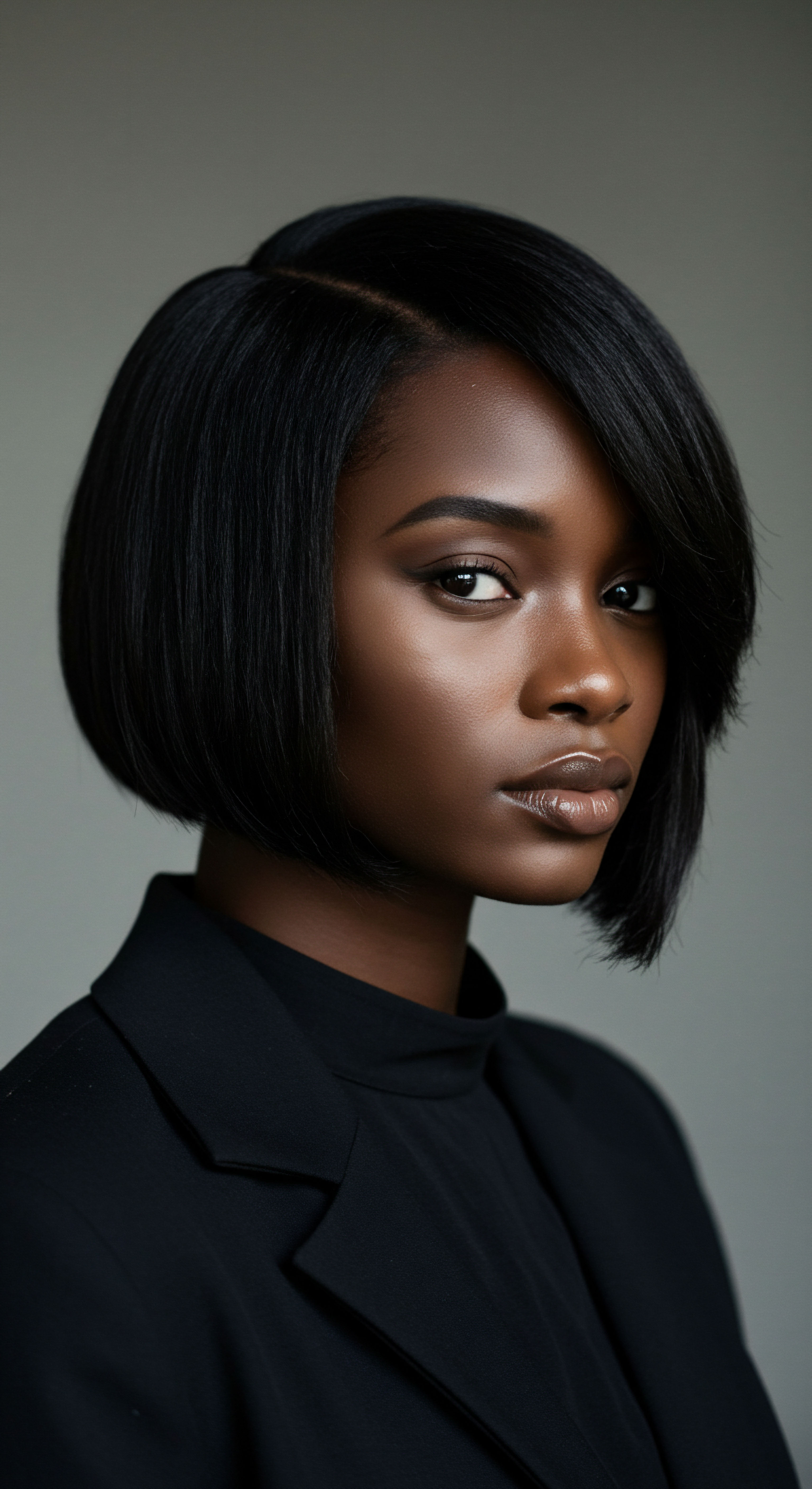
Common Misconceptions
A common misconception regarding Malassezia overgrowth is that it signifies poor hygiene. This is a reductive viewpoint. Instead, its presence is a testament to the complex interplay of biological factors and environmental conditions unique to each individual’s scalp. While proper cleansing is certainly a component of scalp wellness, the condition is not solely a consequence of cleanliness habits.
Many factors, including genetics, hormonal fluctuations, stress, and even diet, can influence sebum production and the scalp’s overall microbial landscape, providing a more comprehensive explanation for its occurrence. Understanding this broader context allows for a more compassionate and effective approach to scalp care, moving beyond simplistic judgments.

Intermediate
Moving beyond the elemental description, an intermediate interpretation of Malassezia Overgrowth delves into the nuanced interplay of biological factors and environmental influences that shape its presence on the scalp. This deeper understanding recognizes that Malassezia, a genus comprising several species, exists as a natural commensal on the human skin, particularly in sebum-rich areas like the scalp. The condition of overgrowth, then, is a departure from this symbiotic relationship, transitioning into a state of dysbiosis where the yeast’s increased population contributes to inflammatory responses. This intermediate explanation emphasizes the dynamic nature of the scalp microbiome, a bustling community of microorganisms that, when disrupted, can lead to noticeable scalp concerns.
The significance of Malassezia overgrowth at this level of comprehension involves acknowledging the yeast’s lipophilic nature. Malassezia species, especially M. globosa and M. restricta, possess enzymes that metabolize triglycerides found in sebum, releasing unsaturated fatty acids.
These fatty acids, while a natural byproduct, can act as irritants on susceptible scalps, triggering an inflammatory cascade. This inflammatory response manifests as the redness, itching, and increased cell turnover characteristic of seborrheic dermatitis, the clinical designation for this condition when it affects the scalp. The scalp’s barrier function can become compromised, leading to further irritation and a cycle of discomfort.
The intermediate understanding of Malassezia overgrowth reveals it as a dysbiosis where the yeast’s lipid metabolism irritates the scalp, triggering inflammation and accelerating skin cell turnover.
For individuals with textured hair, the intermediate understanding of Malassezia overgrowth becomes particularly relevant when considering product choices and hair care regimens. The application of certain oils and butters, while serving to nourish and protect the hair shaft, can inadvertently provide additional sustenance for these lipid-loving yeasts if applied excessively or left on the scalp for prolonged periods without proper cleansing. This isn’t to say oils are inherently problematic, but rather that their application requires mindful consideration within the broader context of scalp health. The practical application of this knowledge guides choices in cleansers and treatments, seeking to rebalance the scalp environment without stripping the hair of its vital moisture.

Factors Influencing Proliferation
Several factors can tip the scales, allowing Malassezia to transition from a harmless inhabitant to an unwelcome overgrowth. Recognizing these influences provides a clearer picture of how the condition develops.
- Sebum Production ❉ Elevated sebum levels provide a rich food source for Malassezia, encouraging its multiplication. Hormonal fluctuations, stress, and even genetics can influence sebum output.
- Humidity and Warmth ❉ Malassezia thrives in warm, moist environments. Protective styles that retain moisture close to the scalp or humid climates can create ideal conditions for yeast proliferation.
- Individual Sensitivity ❉ Not everyone with Malassezia overgrowth experiences symptoms. Individual immune responses and skin barrier integrity play a significant role in determining who develops seborrheic dermatitis.
- Hair Care Practices ❉ The frequency of washing and the types of products used can impact the scalp’s microclimate. Infrequent cleansing can lead to product and sebum accumulation, offering a hospitable environment for Malassezia.
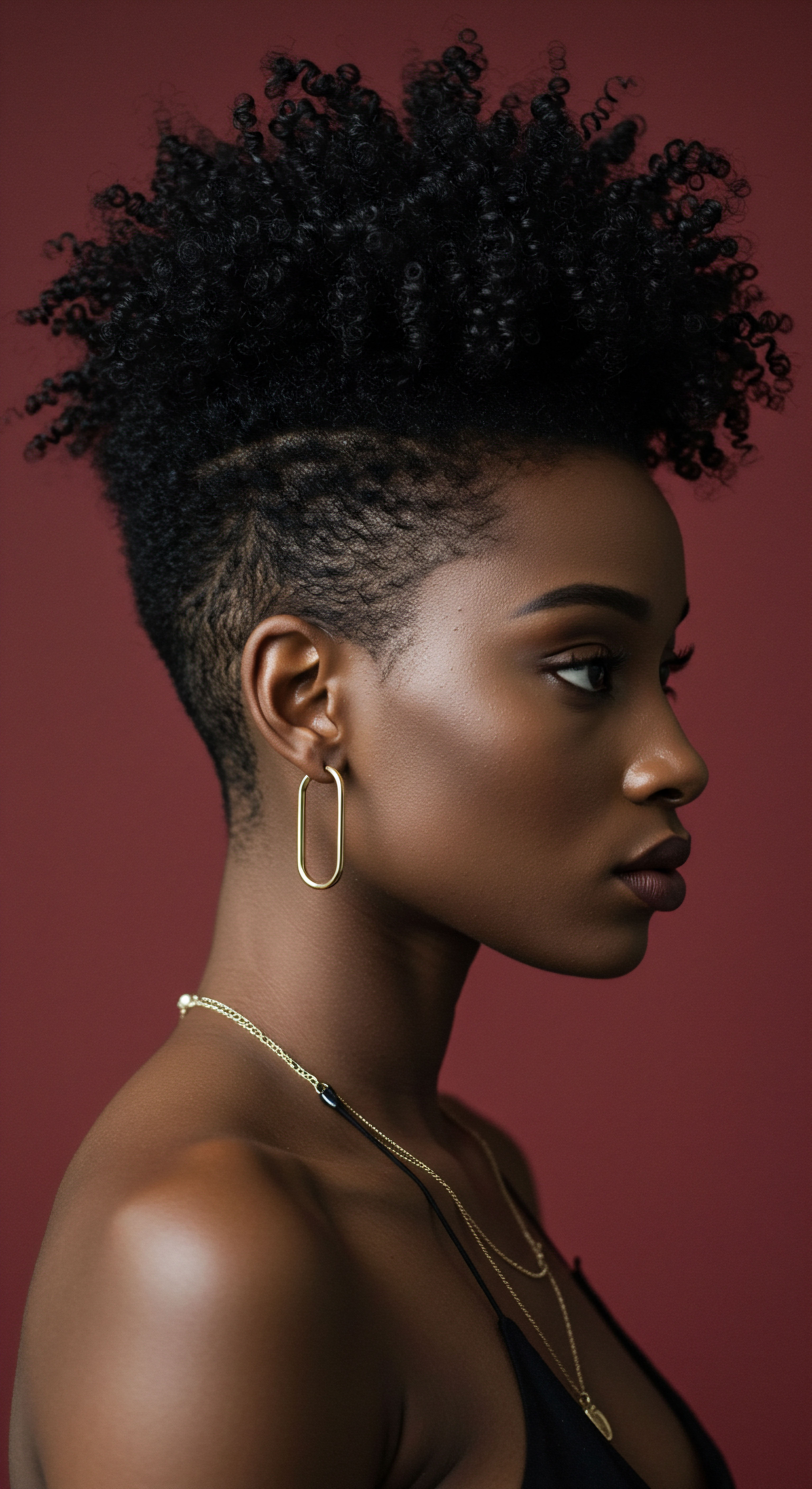
The Role of Cleansing in Textured Hair Care
The approach to cleansing textured hair is often distinct, prioritizing moisture retention over daily washing. This practice, while beneficial for maintaining the hair’s integrity and preventing dryness, necessitates a thoughtful strategy for scalp care. When wash days are less frequent, the natural accumulation of sebum, dead skin cells, and product residue can create an inviting milieu for Malassezia. Therefore, the choice of cleanser and the technique of application become paramount.
Selecting shampoos that effectively cleanse the scalp without stripping the hair of its moisture is a delicate balance. Ingredients like zinc pyrithione or ketoconazole, known for their antifungal properties, can be incorporated into a routine, focusing application directly on the scalp. The mechanical action of gentle massage during shampooing also aids in dislodging flakes and promoting a healthier scalp environment. This careful approach to cleansing, respectful of textured hair’s needs, offers a practical path to managing Malassezia overgrowth.
| Concern Dandruff (Pityriasis Capitis) |
| Typical Manifestation White, dry, or greasy flakes; mild itching. |
| Impact on Textured Hair Visible flakes against dark hair, can be mistaken for dryness, may worsen with product buildup. |
| Concern Seborrheic Dermatitis (SD) |
| Typical Manifestation Redness, greasy scales, more intense itching, sometimes yellow crusts. |
| Impact on Textured Hair Can present as hypopigmented patches on darker skin. Scalp inflammation can affect hair follicles, potentially contributing to breakage. |
| Concern Folliculitis |
| Typical Manifestation Small, itchy, sometimes painful bumps around hair follicles. |
| Impact on Textured Hair Can be exacerbated by occlusive styles or heavy products trapping bacteria/yeast, leading to inflammation around follicles. |
| Concern Understanding these manifestations helps in tailoring care for diverse hair textures. |
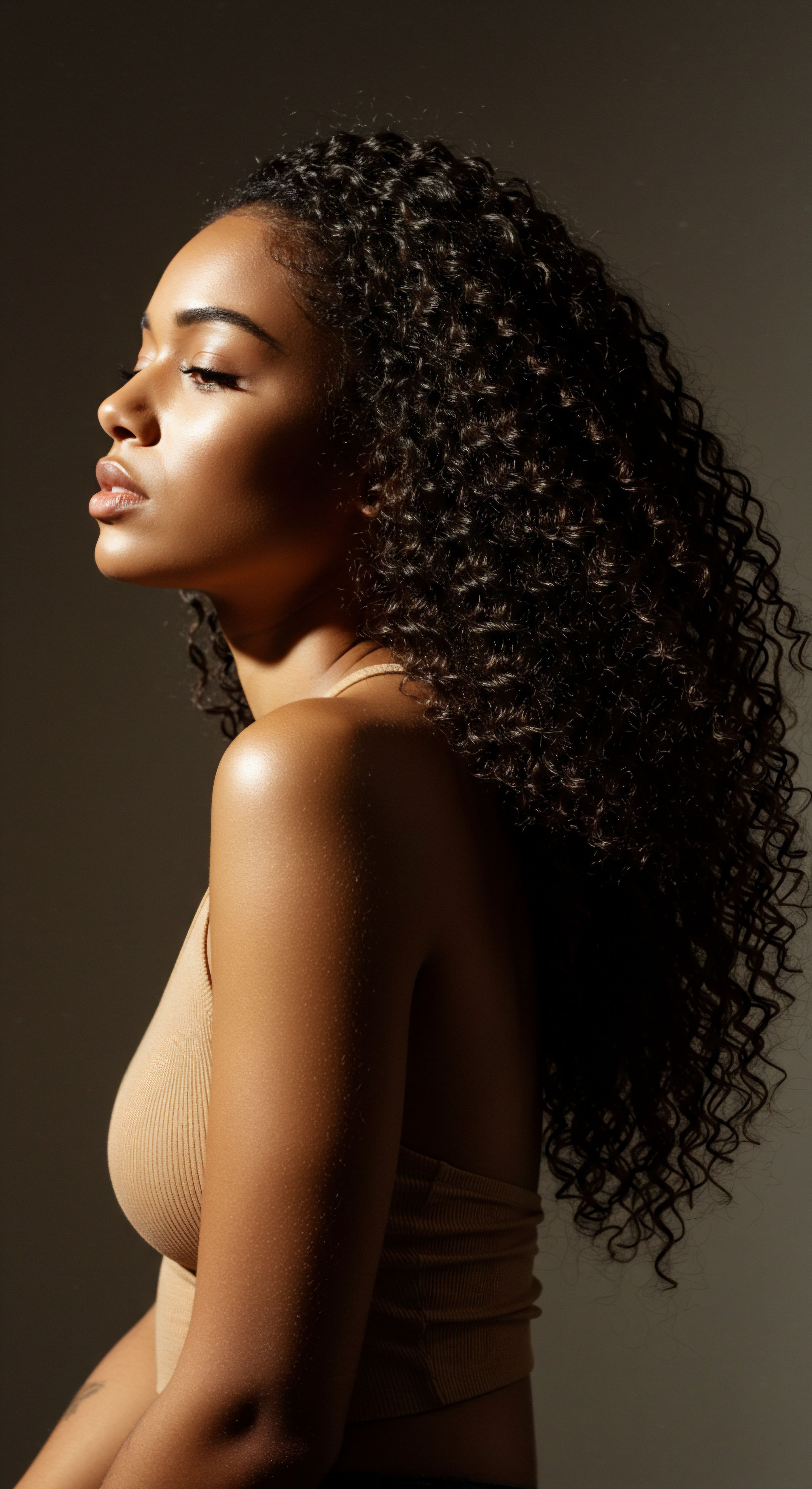
Advanced
At its most sophisticated designation, Malassezia Overgrowth signifies a complex dermatological phenomenon, an intricate dance between host immunology, microbial ecology, and environmental factors, particularly within the distinct physiological and cultural landscape of textured hair. This advanced explication transcends a simple causative link, acknowledging that while Malassezia yeasts are omnipresent commensals, their pathogenic transition involves a delicate tipping point. It is a profound inquiry into scalp dysbiosis, where shifts in species dominance, metabolic activity, and host inflammatory responses collectively orchestrate conditions like seborrheic dermatitis, which manifests with unique presentations in skin of color. The meaning here extends to the very fabric of scalp health, influencing hair integrity and overall well-being.
The contemporary understanding of Malassezia overgrowth moves beyond a singular focus on yeast count, instead considering the qualitative aspects of the scalp microbiome. Research now highlights the role of specific Malassezia species, predominantly M. globosa and M. restricta, which exhibit enhanced lipase activity, breaking down sebum triglycerides into pro-inflammatory free fatty acids.
These unsaturated fatty acids, particularly oleic acid, are thought to disrupt the stratum corneum barrier, inducing a localized inflammatory response and accelerating keratinocyte proliferation, leading to the characteristic scaling. The theoretical underpinning here involves a nuanced appreciation of host-microbe interactions, where genetic predispositions, immune system modulation, and even psychological stress can influence the scalp’s susceptibility to this inflammatory cascade.
Advanced comprehension of Malassezia overgrowth considers the complex interplay of specific yeast species, host immunity, and environmental factors, leading to unique scalp presentations.
A critical, often overlooked, aspect of Malassezia overgrowth within the textured hair community lies in its varied clinical presentation. In individuals with darker skin tones, seborrheic dermatitis may not exhibit the pronounced erythema (redness) commonly seen in lighter skin. Instead, it frequently manifests as hypopigmented or hyperpigmented macules and patches, sometimes forming distinct arcuate or petal-like patterns, termed petaloid seborrheic dermatitis.
This atypical presentation can lead to diagnostic delays or misinterpretations, impacting the timeliness and efficacy of treatment. The delineation of this nuanced presentation is paramount for culturally competent dermatological care, ensuring that interventions are precisely tailored to the observed scalp conditions.

The Unseen Influence ❉ Hair Oils and Malassezia Dynamics
One area of particular significance, and indeed some controversy, within the discourse of Malassezia overgrowth and textured hair care concerns the application of hair oils. For generations, various oils have been integral to hair care traditions across African and mixed-race communities, prized for their ability to moisturize, add sheen, and protect delicate strands. Yet, a deeper scientific inquiry reveals a complex relationship between these cherished emollients and the scalp’s microbial inhabitants.
While anecdotal evidence often champions the benefits of natural oils for scalp health, laboratory studies present a more intricate picture. For instance, in vitro investigations exploring the effects of various lipids on Malassezia growth have yielded compelling insights. One such study meticulously examined the proliferation of M. furfur in the presence of different oils.
The findings indicated that this specific Malassezia species demonstrated robust growth when cultured with butter, corn oil, olive oil, coconut oil, oleic acid, and castor oil, in stark contrast to poor growth observed in a fatty-acid-free medium. This suggests that the very lipids intended to nourish the scalp might, under certain conditions, inadvertently provide a fertile ground for Malassezia proliferation.
Further supporting this complex dynamic, a cross-sectional study conducted in Mekelle City, Ethiopia, among 217 participants experiencing dandruff, revealed a statistically significant association between the use of hair oil and the presence of Malassezia species. Specifically, the use of hair oil showed an adjusted odds ratio (AOR) of 2.964 (95%CI ❉ 1.288 − 6.820), indicating a strong correlation with Malassezia presence among individuals with dandruff. This empirical observation from a population where hair oil use is culturally embedded provides real-world context to the in vitro findings, prompting a re-evaluation of how these traditional practices might be optimized for optimal scalp health in the context of Malassezia overgrowth.
This is not to dismiss the cultural or conditioning merits of oils for the hair shaft, which often requires external lubrication due to its structural properties. Rather, it compels a refined approach ❉ understanding that while oils can be profoundly beneficial for the hair strands themselves, their indiscriminate or excessive application directly to the scalp, particularly for individuals prone to Malassezia-related conditions, warrants thoughtful consideration. The objective becomes a strategic balance, ensuring hair receives its nourishment while the scalp’s microbial equilibrium remains undisturbed. This sophisticated understanding allows for the preservation of heritage practices, adapting them with scientific precision.
- Microbial Adaptation ❉ Malassezia’s ability to adapt to varying scalp conditions, including pH shifts and lipid composition changes, influences its persistence.
- Biofilm Formation ❉ Certain Malassezia species are capable of forming biofilms, resilient communities that can adhere to the scalp and resist antifungal treatments, adding a layer of complexity to management.
- Immune Dysregulation ❉ The host’s immune response, rather than simply the quantity of yeast, is increasingly recognized as a key factor. An overzealous or misdirected immune reaction to Malassezia byproducts can drive inflammation.
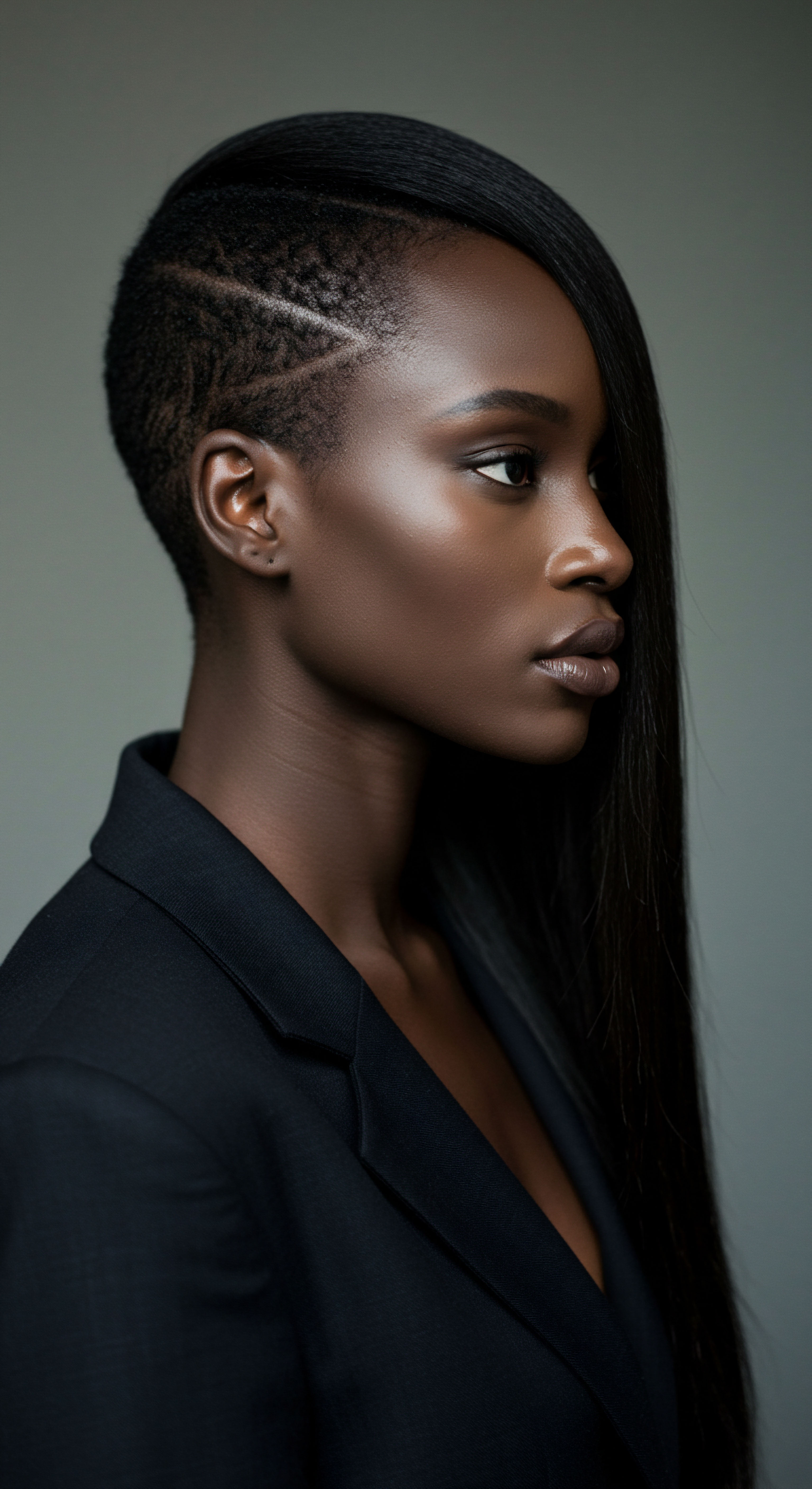
Advanced Therapeutic Considerations
The advanced management of Malassezia overgrowth, particularly in textured hair, necessitates a multifaceted strategy that moves beyond superficial symptom relief. It involves selecting antifungal agents that are effective against the specific Malassezia species prevalent on the scalp, while also considering delivery vehicles that are compatible with hair texture and styling preferences. For instance, formulations that are less likely to cause excessive drying or buildup are preferred.
Beyond direct antifungal intervention, modulating the scalp microbiome and supporting the skin barrier function are critical. This could involve incorporating ingredients that regulate sebum production without causing dryness, or those that promote a balanced microbial community. The long-term consequences of unmanaged Malassezia overgrowth can extend to chronic inflammation, which, in some cases, may contribute to hair thinning or breakage, particularly in already vulnerable textured hair follicles. Therefore, a comprehensive, expert-driven approach is essential for sustaining both scalp vitality and hair resilience.

Reflection
The journey through the intricate landscape of Malassezia overgrowth ultimately brings us to a profound appreciation for the delicate balance that defines our scalp’s well-being. This exploration, from its fundamental designation as a common yeast proliferation to its complex interpretation within the nuanced world of textured hair, illuminates how deeply interconnected our hair’s vitality is with the hidden microbial communities residing at its root. We have seen that this condition is not a simple affliction but a dialogue between biology, environment, and our unique heritage.
Considering the insights gleaned, particularly the intriguing relationship between certain hair oils and Malassezia dynamics, a new lens emerges for how we approach hair care. It beckons us to honor traditional practices while also embracing scientific discernment, seeking harmony between ancestral wisdom and modern understanding. This reflective posture allows us to refine our care rituals, ensuring they genuinely nourish both the hair and the often-overlooked scalp beneath.
The true significance of comprehending Malassezia overgrowth, especially for the Roothea community, lies in empowerment. It is the power to look beyond superficial symptoms, to understand the ‘why’ behind scalp sensations, and to make informed choices that celebrate the inherent beauty and resilience of textured hair. This understanding is a gentle invitation to cultivate a relationship with our scalp that is as thoughtful and unique as each curl and coil, fostering a lasting legacy of hair wellness.

References
- Elgash, M. Dlova, N. Ogunleye, T. & Taylor, S. C. (2019). Seborrheic Dermatitis in Skin of Color ❉ Clinical Considerations. Journal of Drugs in Dermatology, 18(1), 24-27.
- Rigopoulos, D. Lallas, A. & Kontochristopoulos, G. (2019). Hair Oils May Worsen Seborrheic Dermatitis in Black Patients. Clinical Dermatology, 37(6), 725-726.
- Dessinioti, C. & Katsambas, A. D. (2017). Seborrheic dermatitis ❉ Etiology, pathogenesis, and treatment. Clinics in Dermatology, 35(6), 619-626.
- Gaitonde, S. et al. (2024). Seborrheic Dermatitis. StatPearls. NCBI Bookshelf.
- Okereke, J. C. et al. (2024). Prevalence and associated factors for isolated Malassezia species in patients with Dandruff in Mekelle City, Tigrai, Ethiopia. Infection Epidemiology and Microbiology, 1(1), 1-9.
- Grimshaw, S. G. Smith, A. M. Arnold, D. S. et al. (2019). The diversity and abundance of fungi and bacteria on the healthy and dandruff affected human scalp. PLoS One, 14(12), e0225796.
- Lee, J. B. et al. (2018). In vitro study and clinical trial of natural essential oils and extract against Malassezia species. The Journal of Mycology and Infection, 23(3), 101-107.
- Naeini, A. R. Nazeri, M. & Shokri, H. (2018). Inhibitory effect of plant essential oils on Malassezia strains from Iranian dermatitis patients. Journal of Herbmed Pharmacology, 7(1), 18-21.
- Daroch, M. et al. (2021). Longitudinal study of the scalp microbiome suggests coconut oil to enrich healthy scalp commensals. Journal of Cosmetic Dermatology, 20(4), 1198-1206.
- Park, Y. J. et al. (2022). Management of Scalp Biofilm in Local Dermatosis ❉ From In Vivo Visualization to Optimal Treatments. Journal of Fungi, 8(8), 819.